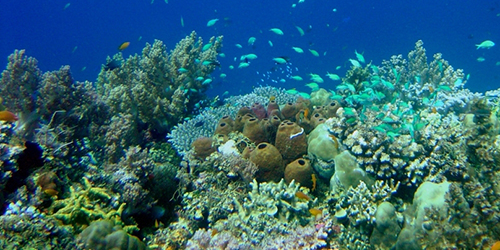
Coral Amendment 9
This amendment establishes 13 new habitat areas of particular concern with fishing regulations that prohibit deployment of bottom-tending gear and anchoring by fishing vessels. The new areas are: West Florida Wall, Alabama Alps Reef, L & W Pinnacles and Scamp Reef (combined area), Mississippi Canyon 118, Roughtongue Reef, Viosca Knoll 826, Viosca Knoll 862/906, AT 047, AT 357, Green Canyon 852, Southern Bank, Harte Bank, and Pulley Ridge South Portion A. A map of the areas and associated coordinates can be found here.
The amendment also designates 8 new areas without fishing regulations and modifies restrictions on existing Habitat Areas of Particular Concern (HAPC) to prevent “deployment of” rather than “fishing with” bottom-tending gear.
The rule is effective as of November 16, 2020.
Coral Amendment 4
Amendment 4 to the Coral FMP Identified Essential Fish Habitat (EFH) for coral, coral reefs and live/hard bottom habitats of the south Atlantic region.; established EFH-Habitat Areas of Particular Concern (HAPC) for coral, coral reefs and live/hard bottom habitats; expanded the Oculina Bank HAPC; established the following two Satellite Oculina HAPCs: (1) Satellite Oculina HAPC #1 , and (2) Satellite Oculina HAPC #2.
This final rule is effective July 14, 2000.
Coral Amendment 3
Amendment 3, with supplementary documents, was prepared by the Gulf of Mexico Fishery Management Council to provide additional management to the harvest of live rock in the Gulf of Mexico. Live rock is an assemblage of living marine organisms attached to a hard substrate such as dead coral or limestone. This amendment considers further live rock regulation including an annual quota during phase-out, revision of trip limits, closed area off Florida’s Panhandle, redefinition of allowable octocorals, and limited personal use live rock harvest.
This final rule is effective November 13, 1995.
Coral Amendment 2
Amendment 2, implemented December 21, 1994, established area closures, vessel trip limits, gear restrictions, permits and reporting for live rock harvest and aquaculture, restricted access, a phase-out of harvest by 1997, and a redefinition of octocorals.
This final rule is effective December 22, 1994, except that § 638.25(c)(3) is effective December 22, 1994, through December 31, 1994 and § 63.8.4(a)(1)(iv)(A) and (h)(2) and 638.7(a)(4) are effective March 1, 1995.
Coral Amendment 1
Amendment 1, completed in 1990, established the total allowable harvest (TAC) for commercial harvesters of gorgonians (soft coral) at 50,000 colonies annually. It established permits and reporting requirements for persons landing gorgonians commercially. It established a permitting requirement and landing limit for non-commercial harvesters (i.e., 6 colonies).
This final rule is effective February 14, 1991.
Original Coral Fishery Management Plan
The fishery management plan (FMP)/Draft Environmental Impact Statement (DEIS), completed in 1982, described the coral communities throughout the jurisdictions of the Gulf and South Atlantic Councils (1). The FMP prohibited harvest of stony coral and seafans except by scientific permit. It established Habitat Areas of Particular Concern (HAPC) in the Gulf and Atlantic where the use of any fishing gear interfacing with the bottom was prohibited. It regulated the use of chemicals used by fish collectors near coral reefs. It established a data reporting system for permittees.
This final rule is effective August 22, 1984.
